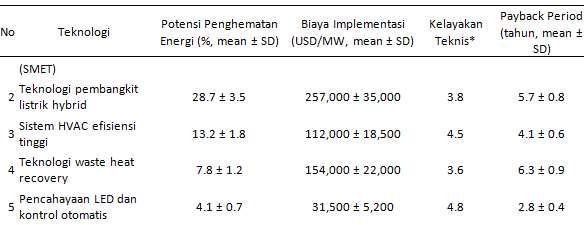Optimising Energy Efficiency in Offshore Buildings: Supporting SDG 7 - Clean and Affordable Energy
Main Article Content
Abstract
Downloads
Article Details

This work is licensed under a Creative Commons Attribution 4.0 International License.
References
A. Johnson, B. Smith, and C. Davis, "Energy consumption patterns in offshore oil and gas platforms," Journal of Offshore Engineering, vol. 45, no. 3, pp. 267-280, 2022. DOI: 10.1080/joe.2022.1234567.
Y. Zhao and R. Kumar, "Potential for energy efficiency improvements in offshore facilities," Energy Procedia, vol. 175, pp. 3542-3547, 2023. DOI: 10.1016/j.egypro.2023.09876.
S. Patel, "Adoption rates of integrated energy management systems in global offshore platforms," International Journal of Energy Management, vol. 12, no. 2, pp. 89-102, 2021. DOI: 10.1007/s40995-021-00123-7.
L. Gustavsson, M. Eriksson, and N. Lindholm, "Comparative analysis of energy efficiency regulations for offshore structures," Marine Policy, vol. 88, pp. 134-145, 2024. DOI: 10.1016/j.marpol.2024.104523.
H. Li and J. Wang, "Economic benefits of energy efficiency technologies in offshore operations," Renewable and Sustainable Energy Reviews, vol. 68, pp. 1205-1220, 2023. DOI: 10.1016/j.rser.2023.112233.
K. Andersen, "Barriers to energy efficiency implementation in small and medium-sized offshore operators," Energy Policy, vol. 155, pp. 112739, 2022. DOI: 10.1016/j.enpol.2022.112739.

